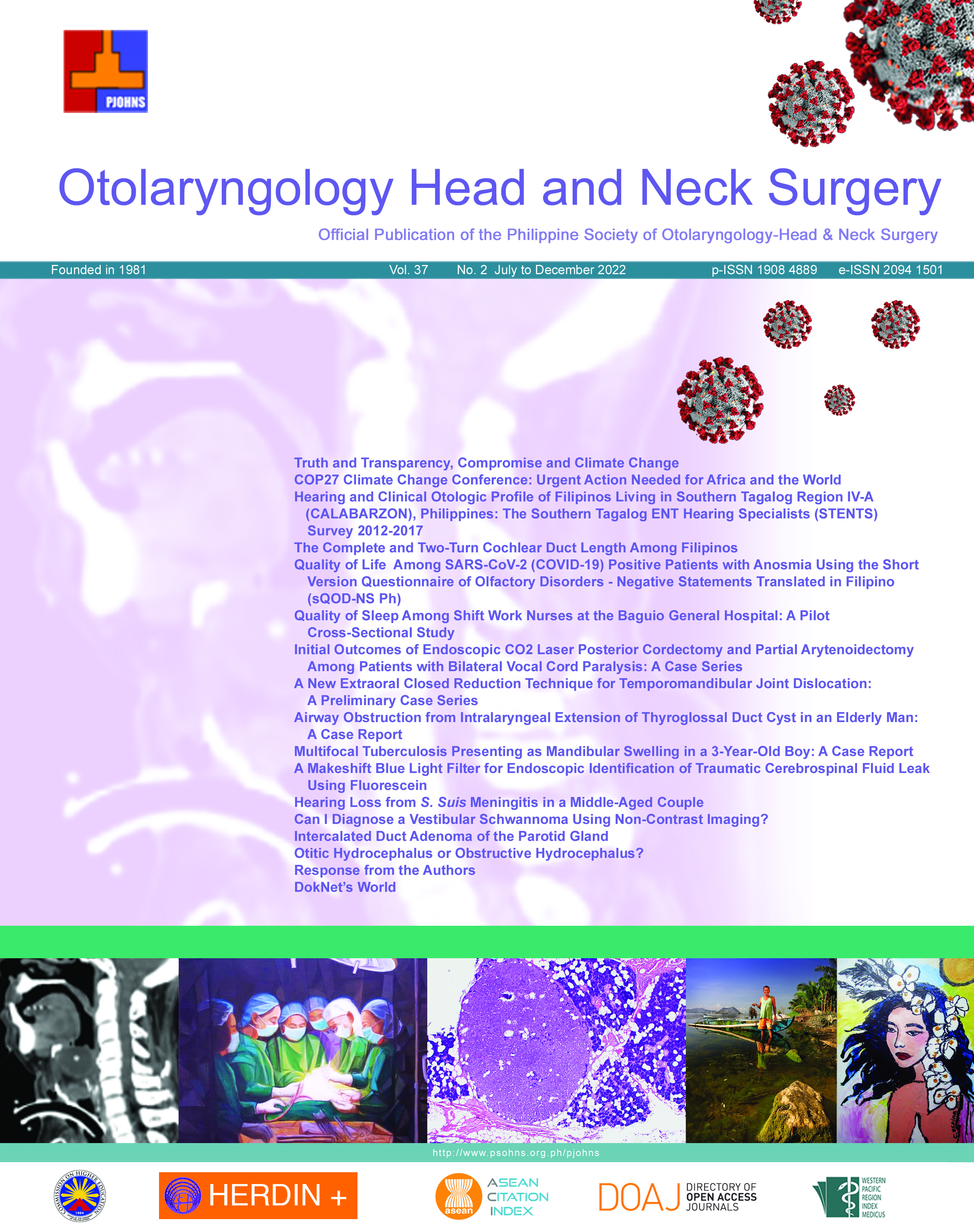Quality of Life Among SARS-CoV-2 (COVID-19) Positive Patients with Anosmia Using the Short Version Questionnaire of Olfactory Disorders - Negative Statements Translated in Filipino (sQOD-NS Ph)
DOI:
https://doi.org/10.32412/pjohns.v37i2.2021Keywords:
COVID-19, olfaction, anosmia, quality of life, QOD-NS, smell, smell lossAbstract
ABSTRACT
Objective: To determine the quality of life among SARS-CoV-2 (COVID-19) positive patients with anosmia using the Short Version Questionnaire of Olfactory Disorders - Negative Statements translated in Filipino (sQOD-NS Ph).
Methods:
Design: Cross-Sectional Study
Setting: Tertiary Government Training Hospital
Participants: SARS-CoV-2 (COVID-19) RT-PCR positive patients aged 18 years old and above with COVID-19 symptoms and anosmia in a tertiary government hospital who consulted from March 2020 to August 2021 answered the short version of sQOD-NS Ph.
Results: Out of 108 participants with positive SARS-CoV-2 (COVID-19) RT-PCR test, 72 (66%) presented with anosmia, and sQOD-NS Ph scores ranged from 1 to 21 with a mean of 14.78. Thirty two (44%) encountered problems in eating while 21 (29%) had feelings of isolation due to loss of smell. There was an inverse correlation of -0.478 between recovery time of olfaction and QoL score, hence the longer the recovery time, the lower the QoL score, while the shorter the recovery time, the higher the QoL score (p < .0001).
Conclusion: Majority of COVID-19 patients with anosmia had mild or negligible impairment, while a small percentage had impaired quality of life. The low percentage may be due to high number of patients who may have recovered their sense of smell along the course of the disease.
Downloads
Published
How to Cite
Issue
Section
License

This work is licensed under a Creative Commons Attribution-NonCommercial-NoDerivatives 4.0 International License.
Copyright transfer (all authors; where the work is not protected by a copyright act e.g. US federal employment at the time of manuscript preparation, and there is no copyright of which ownership can be transferred, a separate statement is hereby submitted by each concerned author). In consideration of the action taken by the Philippine Journal of Otolaryngology Head and Neck Surgery in reviewing and editing this manuscript, I hereby assign, transfer and convey all rights, title and interest in the work, including copyright ownership, to the Philippine Society of Otolaryngology Head and Neck Surgery, Inc. (PSOHNS) in the event that this work is published by the PSOHNS. In making this assignment of ownership, I understand that all accepted manuscripts become the permanent property of the PSOHNS and may not be published elsewhere without written permission from the PSOHNS unless shared under the terms of a Creative Commons Attribution-NonCommercial-NoDerivatives 4.0 International (CC BY-NC-ND 4.0) license.



